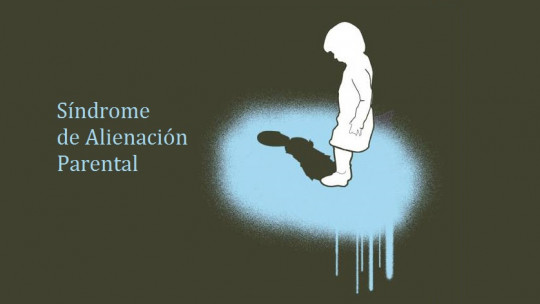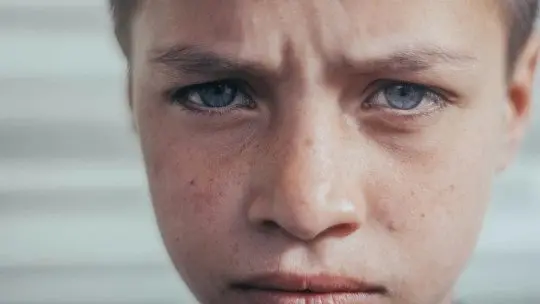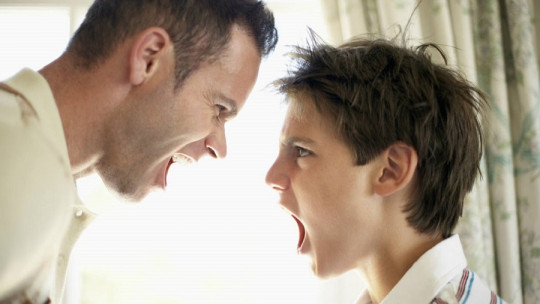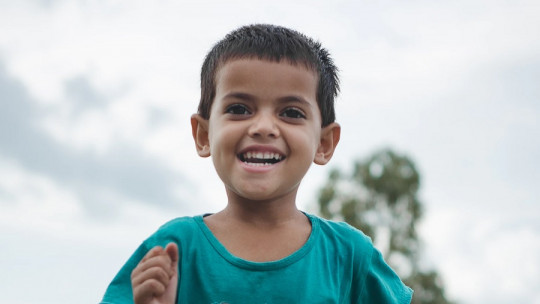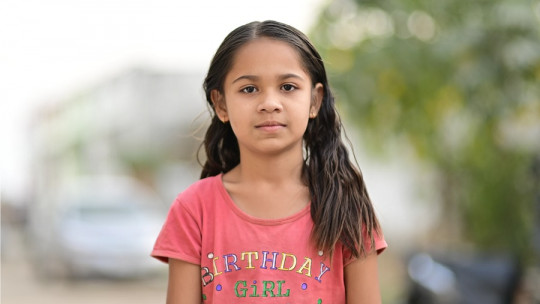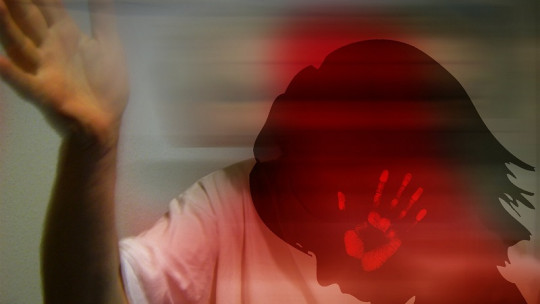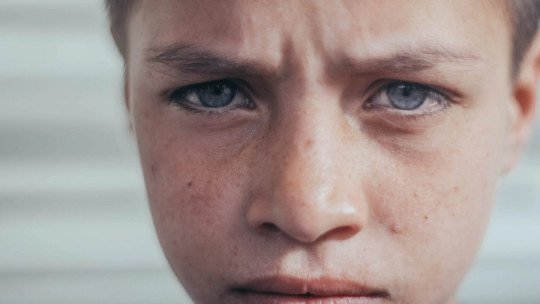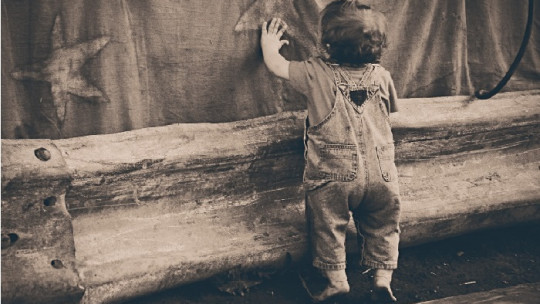
In the last decades The study of the issue of child abuse has experienced considerable growth
It has gone from being an issue traditionally assumed by society as a normal practice to being an important area of research since the publication of the first research at the end of the 20th century.
What is child abuse?
The concept of child abuse It can be defined as any action coming from the person responsible for the minor, whether by commission or omission, that puts (or may put) the physical, emotional or cognitive integrity of the child at risk.
One of the determining aspects that are analyzed to assess the existence or not of this phenomenon comes from the study of the environment in which the minor develops. It is usually talked about maladaptive environment either harmful when various factors occur such as a breakdown at the family level in which aggressive interactions are frequently resorted to, little affection, a marginal socio-economic level, a dysfunctional school environment at a psycho-pedagogical level, a social environment lacking interests, cultural-urban resources insufficient, or presence of a conflictive environment in the neighborhood.
A definition of child abuse similar to the one presented is the one included inhe General Assembly of the United Nations Organization 1989: “Child abuse is any form of violence, physical or mental harm or abuse, neglect or negligent treatment, mistreatment or exploitation, which occurs while the child is in the custody of his or her parents, a guardian or any other person. another person who is in charge of him.”
1. Types of child abuse
The concept of child abuse has been evolving from ancient times to the current era, going from being a practice that was in no case considered reportable, to being defined as a crime starting in the last decades of the last century. The initial refusal to consider child abuse as a deplorable phenomenon has traditionally been justified by three main principles: the idea that the child is the property of the parents, the belief that violence and aggression are accepted as appropriate disciplinary methods, and the lack of consideration of the rights of the minor as legitimate.
1.1. physical abuse
Physical abuse has been defined by Arruabarrena and De Paúl as a type of voluntary behavior that causes either physical harm to the child or the development of a physical illness (or risk of suffering from it). It has, therefore, an intentional component with respect to actively causing harm to the minor.
Various types of physical abuse can be distinguished. depending on the goal that the parents wish to achieve: as a way of disciplining, as an expression of rejection of the child, as an expression of sadistic characteristics on the part of the aggressor or as a consequence of lack of control in a specific conflictive family situation.
1.2. emotional abuse
On the other hand, emotional abuse does not present the same objectivity and clarity regarding the possibility of delimiting it. The same authors conceptualize it as the set of behaviors related to an interaction more or less maintained over time and that is based on an attitude of verbal hostility (insults, contempt, threats) as well as blocking any initiative of interaction on the part of the child towards their parents or caregivers. Being able to define it as a form of child abuse is complicated.
On the other hand, Emotional abandonment is understood as the absence of responses from parents who, permanently, appear passive in response to the demands or signals that the minor emits about his or her interaction needs and affection behaviors with respect to said parental figures.
The main difference between both phenomena refers, once again, to the intentionality of the action; In the first case the action is committed and in the second, it is omitted.
1.3. Child neglect
Physical abandonment or child neglect consists of the action of ceasing to care for the minor for whom one has the obligation to care, whether putting an objectively observable physical distance or not. Therefore, this practice is understood as an attitude of omission, although certain authors such as Polansky consider that this act is carried out voluntarily by the parents. The consequences derived from negligence can be physical, cognitive, emotional or social, according to Cantón and Cortés.
Furthermore, Martínez and De Paúl have differentiated between the concepts of negligence and physical abandonment. The first phenomenon can be both conscious and unconscious and can be due to aspects such as the ignorance and lack of culture of the parents as they do not consider these acts as possible causes of psychological damage to the minor. On the other hand, physical abandonment is oriented more towards consequences of damage to the organism (bodily damage) and is understood as a case of extreme negligence.
2. Causes of child abuse
Traditionally, and until the 1990s, the presence of psychopathological alterations in parents had been unequivocally related to the existence of child abuse practices in the family nucleus.
Following research in recent years, it appears that The explanatory causes point to factors closer to socioeconomic aspects and unfavorable contextual circumstances that diminish the social support network of the minor and the family in general, ultimately generating tensions in the family system.
Thus, an explanatory model that has had important empirical support is the one proposed by Parke and Colimer in the seventies and ratified by Wolfe in the eighties. These authors found that the following list of characteristics maintain a significant correlation with the existence of child abuse behaviors in the family system:
From the psychological to the family, social and cultural
On the other hand, Belsky, at the same time, presented an ecosystem approach to explain the causes that lead to the appearance of child abuse. The author defends in his theory that factors can operate at different ecological levels: in the microsystem, in the macrosystem and in the exosystem.
In the first, the specific behaviors of individuals and their psychological characteristics are distinguished as study variables; The second includes socioeconomic, structural and cultural variables (resources and access to them, values and normative attitudes of society, fundamentally); and at the third level, social relationships and the professional field are evaluated.
Other authors such as Larrance and Twentyman point to the presence of cognitive distortions in mothers of abused minors, while Wolfe is more inclined to base causality on findings that show negligent avoidance behaviors and withdrawal of affection. Tymchuc, for his part, has found a correlation between limited intellectual capacity and negligent attitude in the treatment of their own children, although this does not mean that all mothers with diagnosed mental retardation necessarily apply this dysfunctional behavior.
Finally, from the cognitive perspective, Crittenden and Milner proposed in the nineties that there is a significant relationship between the type of processing of information received from the outside (interactions with the child, for example) and the presence of child abuse. It seems to have been proven that abusive parents have problems interpreting the meaning of the behaviors and demands expressed by the child.
Thus, in the face of such perceptual alteration, Parents usually respond with avoidance, withdrawal or ignorance to the minor’s request. since they develop a belief of learned helplessness assuming that they will not be able to incorporate a new, more adaptive and appropriate methodology. Furthermore, according to the study, these types of parents also tend to underestimate the satisfaction of their children’s needs, prioritizing other types of obligations and activities ahead of the minor.
3. Indicators of child abuse
As we have seen, emotional abuse is more complex to demonstrate since the indicators are not so clearly observable as in the case of physical abuse. In any case, there are certain signals coming from both the minor and the abusive adult that can set off alarm bells and serve to provide a more solid basis for proof that this type of behavior is occurring.
3.1. Indicators of child abuse in the victim
In a first set of variables to be assessed are the manifestations that the minor as a victim, he externalizes through his verbalizations and behaviors, for example: maintaining a withdrawn, helpful attitude, or expressing a refusal to share fears and certain experiences with other close people; suffer alterations in academic performance and relationships with peers; present dysfunction in sphincter control, eating or sleeping; show alterations in certain personality traits and mood, or develop sexual disorders.
3.2. Indicators of child abuse in the aggressor
In a second group of factors are those that refer to Parenting behaviors that are linked to child abuse practices with relative frequency These attitudes vary depending on age, but in most cases they are usually directed towards the child, actions of rejection, isolation and avoidance of contact, ignorance and indifference to the minor’s demands, use of threats and fears, exaggerated punishments. , denial in the expression of affection, absence of communication, contempt, excessively demanding demands, or blocking the development of autonomous functioning, among others.
3.3. Psychological indicators of child abuse
At a third level are the alterations produced in the basic cognitive learning capacities such as language, symbolic and abstract thinking, emotional self-control and the management of impulsivity in interpersonal relationships. Related to it, Reference can be made to the educational consequences suffered by minors exposed to emotional abandonment such as spending most of the day alone without receiving any type of attention, frequent unjustified absences from school or poor family-school participation and collaboration.
3.4. Indicators of child abuse in the family climate
Ultimately in the coexistence area of the family nucleus The observable damages correspond to the presence of emotional rejection, isolation, verbal hostility and threats, lack of communication and under parental emotional control as examples of emotional abuse; and persistent lack of responses to the minor’s demands and lack of communication regarding signs of emotional abandonment.
4. Child abuse prevention factors
According to the proposal of the Systems Theory of Beavers and other later authors, A series of dimensions are distinguished that contribute decisively to the establishment of an adaptive family relationship environment and satisfactory as the following:
- A structure and organization where each of the subsystems is delimited (the relationship between spouses, the fraternal relationship, etc.) while allowing a certain permeability between them.
- The presence of affective behaviors among the members.
- An operation limited to the democratic educational style where the behavioral control of the progeny is clearly defined.
- Parental Stable Personality Traits and clear establishment of the roles they play in the family nucleus.
- A communicative dynamic based on correspondence expressiveness, and clarity.
- A defined relationship with respect to systems external to the primary family unit (other family members, friends, educational community, neighborhood, etc.).
- How the performance of the tasks assigned to each member occurs to promote the psychological development of the little ones in the main life areas (interpersonal relationships, coping with difficulties, behavioral repertoire, emotional stability, etc.).
From all the dimensions mentioned above, it is clear that the family must provide the child with a stable space equipped with the resources that allow him or her to have his or her needs as a human being covered, both physical, emotional and educational.
More specifically, López points out that There are three main types of needs that the family must safeguard in relation to its offspring:
- The physiobiological: such as food, hygiene, clothing, health, protection from physical dangers, etc.
- The cognitive: an adequate and coherent education in values and norms, facilitation and exposure to a level of stimulation that accelerates their learning.
- The emotional and social: the feeling of knowing oneself valued, accepted and esteemed; offering support to encourage the development of relationships with peers; the consideration of their involvement in family decisions and actions, among others.
In conclusion
Definitely, There are many different manifestations of child abuse, far from considering physical abuse exclusively as the only valid and recognizable typology. All of them can lead to the appearance of intensely serious psychological consequences in the minor, regardless of the type of practice in question.
On the other hand, the assumption that this problem has a multi-causal origin seems to be clear, although contextual and socio-economic factors are shown to be central in the causal determination of the phenomenon of child abuse.
It is worth highlighting, ultimately, the relevance of analyzing in depth how the indications that explain what types of prevention and protection practices are useful can be applied and effective in order to avoid falling into the appearance of this serious behavioral deviation.
- Arruabarrena, Mª I. and de Paúl, J. Abuse of children in the family. Evaluation and treatment, Ediciones Pirámide, Madrid, 2005.
- Beavers, W.R., & Hampson, R.B. (1995). Successful families (Evaluation, treatment and intervention), Barcelona, Paidós.
- Belsky, J. (1993). Etiology of child maltreatment: a developmental-ecological analysis. Psychological Bulletin, 114, 413-434.
- Cantón, J. and Cortés, MA (1997). Child mistreatment and sexual abuse. Madrid: 21st century.
- Crittenden, P. (1988). Family and dyadic patterns of functioning in maltreating families. In K. Browne, C.
- Larrance, D.T., & Twentyman, C.T. (1983). Maternal attributions and child abuse. Journal of Abnormal Psychology, 92, 449-457.
- López, F. (1995): Children’s needs. Theoretical foundation, classification and educational criteria of children’s needs (volume I and II). Madrid, Ministry of Social Affairs.
- Milner, J. S. (1995). The application of social information processing theory to the problem of physical abuse of children. Childhood and Learning, 71, 125-134.
- Parke, R.D. & Collmer, C.W. (1975). Child abuse: An interdisciplinary analysis. In E. M. Hetherington (Ed.). Review of child development research (vol 5). Chicago: University of Chicago Press.
- Polansky, N.A., De Saix, C., & Sharlin, S.A. (1972). Child neglect. Understanding and reaching the parent. Washington: Child Welfare League of America.
- Tymchuc, A.J., & Andron, L. (1990). Mothers with mental retardation who do not abuse or neglect their children. Child Abuse and Neglect, 14, 313-324.
- Wolfe, D. (1985). Child abusive parents: an empirical review and analysis. Psychological Bulletin, 97, 462-482.

